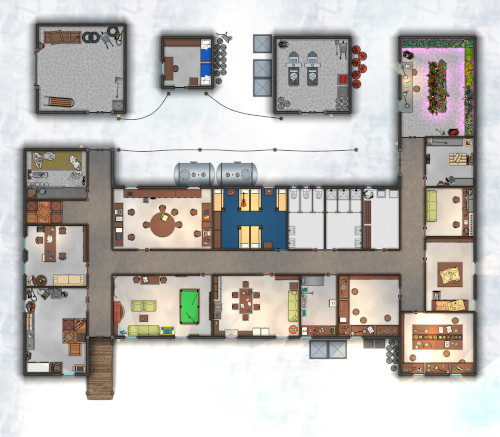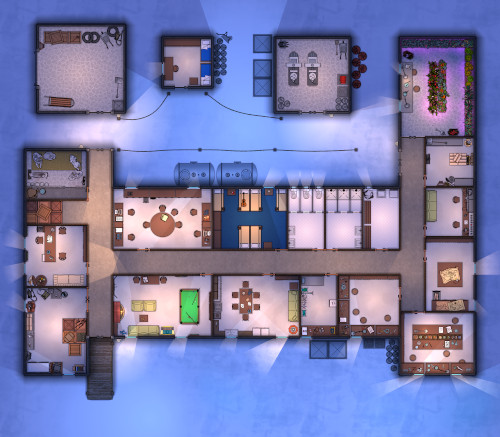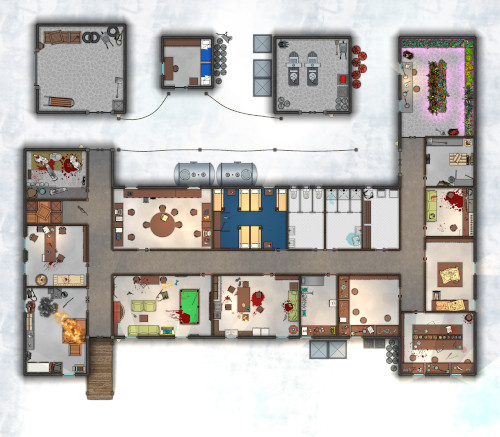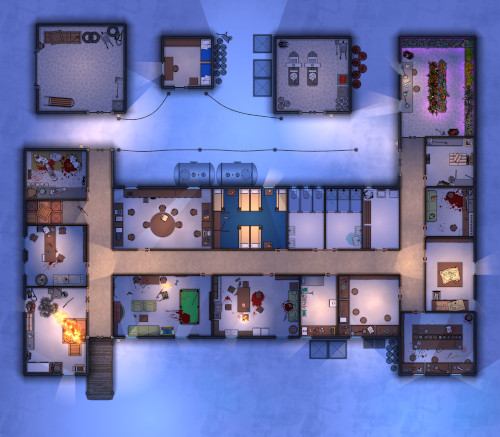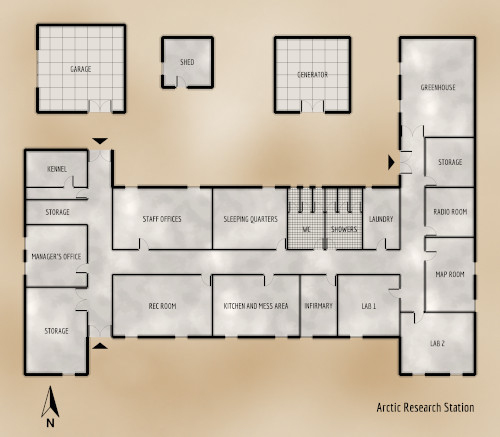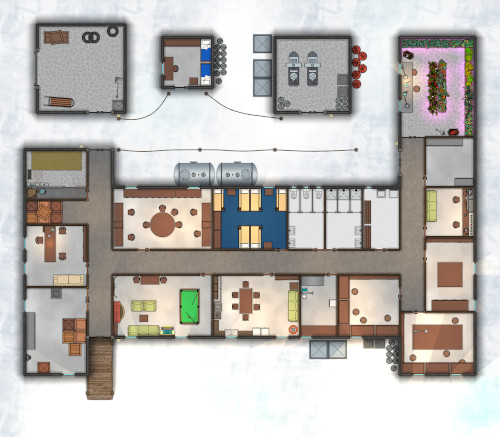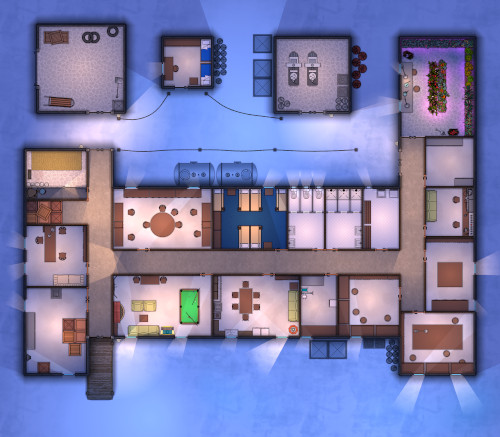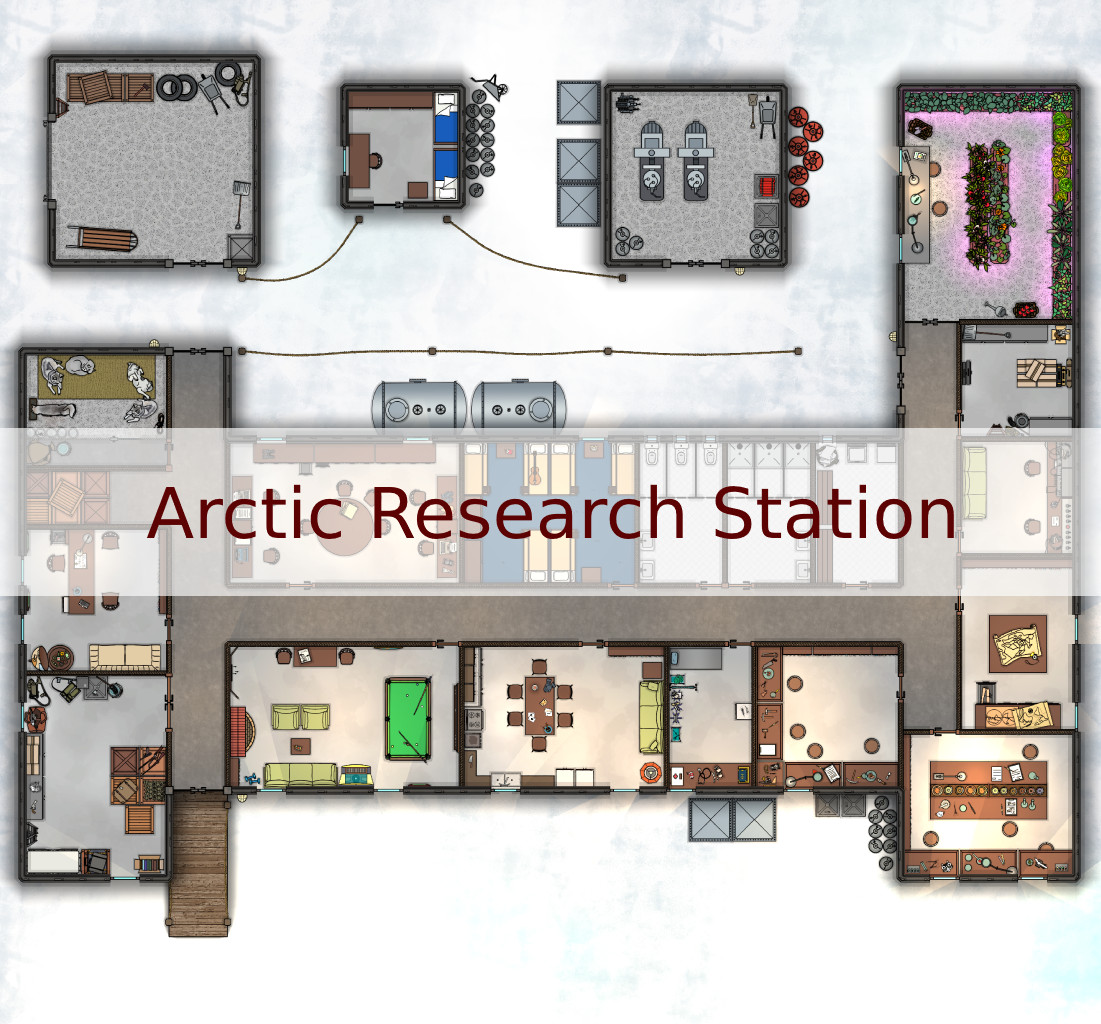Why do the aurora borealis form impossible patterns? What makes the ice samples glow in the dark? How do the radio signals pick up voices from nowhere? Why do the research logs show entries from future dates? What causes the snow to move against the wind?
Follow Cthulhu Architect on BlueSky!I’m going to hide this tape when I’m finished. If none of us make it, at least there will be some kind of record. The storm’s been hitting us hard now for 48 hours. We still have nothing to go on…One other thing: I think it rips through your clothes when it takes you over. Windows found some shredded and bloody long-johns in the trash but the name tag was missing. They could be anybody’s. Nobody…nobody trusts anybody now, and we’re all very tired… there’s nothing more I can do, just wait…this is R.J. MacReady, helicopter pilot, US outpost #31.
― R.J. MacReady, The Thing
Dr. Sarah Chen pressed her face against the frost-covered window, watching the endless white expanse that surrounded Research Station Omega. For six weeks, she and her team had been drilling core samples from the permafrost, seeking climate data from millennia past. What they found instead defied every law of nature she knew.
The first sign was the sound—a low, rhythmic humming that seemed to emanate from deep within the earth. Marcus had dismissed it as equipment malfunction, but Sarah knew better. She’d heard that sound before, in dreams that left her gasping and drenched in cold sweat.
Then came the samples from the deepest drilling point, 847 meters down. The ice was wrong—not the clear blue-white of ancient glacial formation, but a sickly amber color that seemed to pulse with its own inner light. Worse still were the shapes trapped within: twisted forms that hurt to look at directly, as if her eyes refused to process their impossible geometries.
“Sarah, you need to see this.” Dr. Reeves’ voice crackled over the intercom, heavy with an exhaustion that went beyond mere fatigue. She found him in the lab, standing motionless before the microscope, his face pale as the ice outside.
“The organisms,” he whispered. “They’re not extinct. They’re dormant.”
The sample under the lens writhed with microscopic life—if life was the right word for something that seemed to exist in dimensions her instruments couldn’t measure. As she watched, the creatures began to move with increased urgency, as though aware they were being observed.
That night, Marcus went missing. They found his drill sitting abandoned at the deepest bore hole, still running, boring ever deeper into the permafrost. The hole itself had changed—widened somehow, though the equipment showed no signs of malfunction. Sarah could hear the humming more clearly now, rising from the depths like a summons.
By morning, two more team members had vanished. Dr. Petrov was found in the communications room, his body frozen solid but his eyes following Sarah’s movements. When she tried to radio for evacuation, the equipment produced only that same rhythmic humming, now harmonizing with itself in impossible frequencies.
The station’s lights began to flicker in rhythm with the sound. The walls themselves seemed to breathe. And from the deepest drill hole came a new sound—the scraping, sliding noise of something immense pulling itself up from the prehistoric depths, following the man-made tunnel to the surface world above.
Sarah realized with growing horror that they hadn’t discovered something ancient and dormant. They had provided it with a way out, a passage from its frozen prison to a world it had been waiting eons to reclaim. The amber ice hadn’t preserved the creatures—it had been their chrysalis.
As the station’s foundation began to buckle and crack, Sarah made one final transmission before the equipment died completely: “Do not send rescue. Bury this place. Bury it deep and never dig again.”
The humming grew louder, and something vast stirred beneath the ice.
